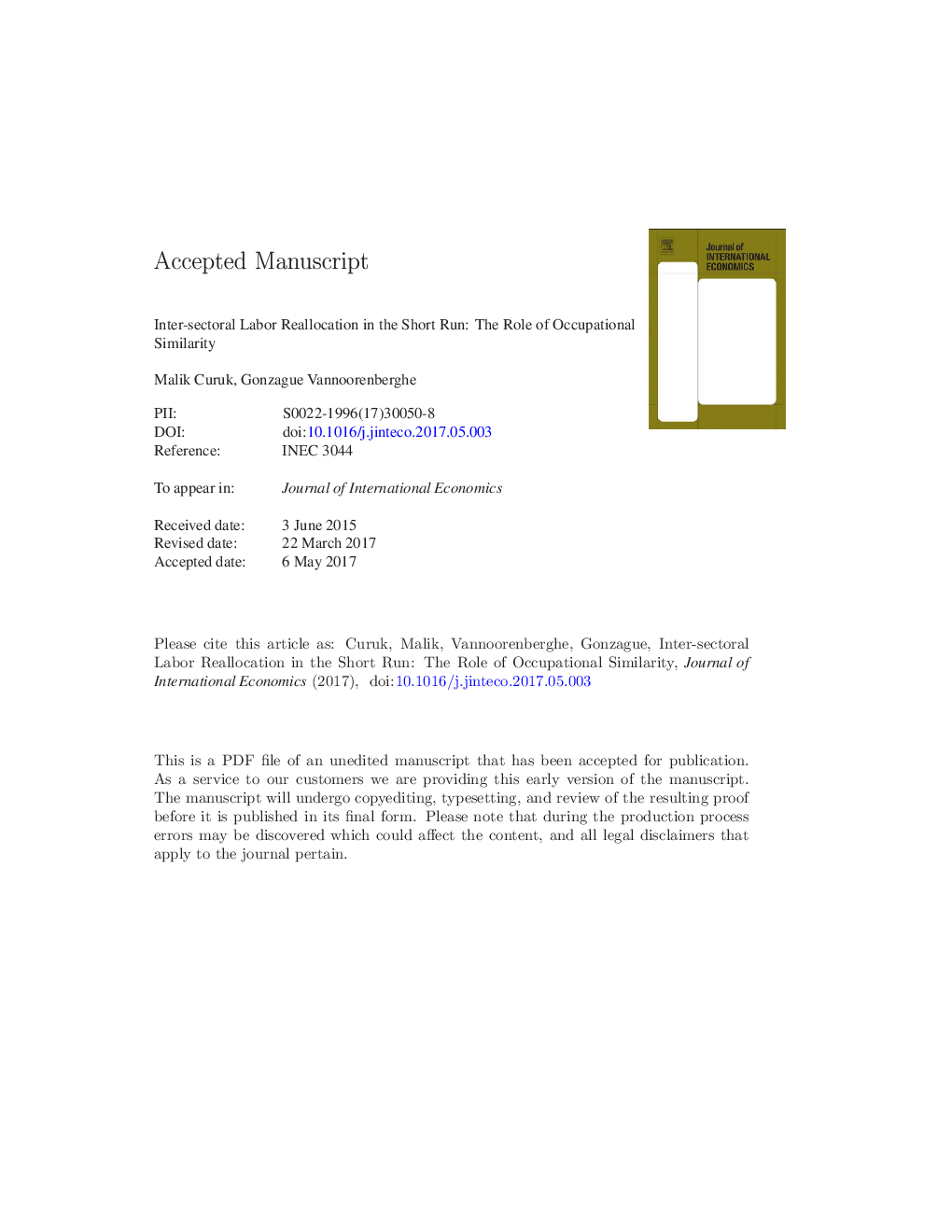| Article ID | Journal | Published Year | Pages | File Type |
|---|---|---|---|---|
| 5100892 | Journal of International Economics | 2017 | 78 Pages |
Abstract
This paper shows that inter-sectoral labor reallocation is affected by the similarity of the occupational mix of industries within a local labor market. We develop a theory-based measure of occupational similarity between industries and show how geographic proximity to industries using similar occupations raises the ability of an industry to respond to aggregate shocks. Using data on the employment growth of region-industry pairs in the U.S., we confirm empirically that an industry's employment responds more to nationwide changes in regions where industries have access to a relatively large pool of the occupations they need. Imputing U.S. data to our model, we show that the short-run gains from trade resulting from terms of trade movements are significantly lower than in a model where workers move freely between occupations and regions. We also find that the sensitivity of employment to economic shocks differs widely across U.S. industries, from a low sensitivity in agriculture to a high sensitivity in wholesale trade.
Related Topics
Social Sciences and Humanities
Economics, Econometrics and Finance
Economics and Econometrics
Authors
Malik Curuk, Gonzague Vannoorenberghe,
